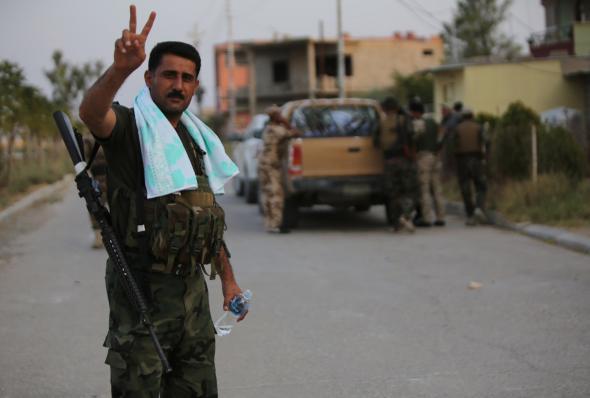In all of his statements on the new U.S. military operation in Iraq, including his remarks yesterday, President Obama has repeatedly emphasized that he’s intent on avoiding “mission creep,” that American objectives are limited, and that this won’t be a new Iraq war.
That is understandable given American public opinion right now, and so far the limited U.S. airstrikes do appear to be succeeding in helping Kurdish and Iraqi forces push back ISIS fighters from northern Iraq and allowing an international humanitarian aid mission to ramp up.
On the other hand, it’s not really clear from what the president has said how he defines success in this mission. Obama has several times emphasized that he has no plans to allow the U.S. military to serve as the “Iraqi air force” and that the Iraqi government is responsible for its own security. In some sense, we seem to be back to George W. Bush’s old “as the Iraqis stand up, we will stand down” mantra. But this time expectations are far lower and goals far more vague.
“We can and should support moderate forces who can bring stability to Iraq,” the president says. But how much stability is enough?
Clearly ISIS’s gains in northern Iraq two weeks ago and the humanitarian crisis faced by the Yazidi refugees on Mount Sinjar was seen as a tipping point. Obama has spoken of preventing a “potential act of genocide” and noted that if the Mosul Dam had been breached, “it could’ve been catastrophic.”
“The wolf’s at the door,” Obama said of ISIS yesterday. But the wolf has been there for a while. After all, ISIS’s offensive in Iraq began not in June when it captured Mosul but back in January when it took Fallujah, a development that garnered little attention in the United States, or at least prompted few calls for intervention.
Is stability a situation in which only one major Iraqi city is under the control of terrorists? Or perhaps one in which the monthly death toll from violence in the country is around 1,000 instead of above 2,000? Or perhaps one in which ISIS commits its mass atrocities only on the Syrian side of the border?
From recent discussion, you would think that the removal of Prime Minister Nouri al-Maliki was a long-standing goal of U.S. policy. The United States seems to have played a behind-the-scenes role in hastening his departure from power and is rewarding Iraq’s government with more assistance now that he’s gone. But the administration also seemed more than willing to support Maliki for years even as it was abundantly clear that he was hollowing out Iraq’s institutions and using his security forces to stifle political opponents, paving the way for exactly the sort of situation we’re seeing now. Are we really going to keep that much closer tabs on his successor?
The cynical answer is that the goal seems to be for Iraq to become just stable enough that we can go back to not paying attention to it. And I suspect that in the end, that may have more to do with how long the U.S. media continues to treat Iraq as a major story than with what’s actually happening there.
